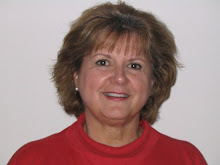Children’s rooms, Keepsakes and Travel
June is filled with activities and it is difficult to think
about organizing. The best approach is
to work in the areas that are already requiring time. Since it is the end of the school year and
the children or grandchildren will be around, one subject to consider is their
spaces and the keepsakes you have been saving for them. Of course travel is on the mind of most of
us, too.
Children's Rooms
An avalanche of school papers may be arriving for you to
handle this month.
My best advice is to let the child decide which to
keep. Keepsake boxes or binders can be
used for these.
Give one to each child and let it be the only place for
special saved items. If it gets too
full, let the child decide what to keep and what can go.
Resist the urge to get more or bigger boxes. Think about how many things you really need
from your childhood to remember the good times.
Of course there are items they have made that you will store
with your keepsakes, but be selective.
Children now have time to go through their rooms and
eliminate items they have not used or no longer want or like.
Clothing that no longer fits can be sorted for sale or
donation. Children grow quickly and by
fall most of what they wore during the past year will not fit. Thankfully not much variety in clothing is
need for the summer months.
If you are storing clothes for younger siblings to have
later on, remember to label them as to sex, size and season.
Children need limits on everything except love and
affection. They should not be allowed to
collect an unlimited amount of matchbox cars, Barbie clothes, t-shirts,
flip-flops or anything else.
Let the space determine how much can be easily organized in
the given space and draw the line there.
You will be teaching them good organizing habits and a lesson that there
are limits in life.
Should they want a new item, remind them something they
already have must go. This is the “one
in—one out” rule that we all should follow.
Keepsakes
Too many of anything means none of them are special. This includes collections such as china,
dolls, salt and pepper shakers, stamps, etc.
If space is limited and many of these items are stored in
the attic or closets, consider saving only those that have special meaning and
letting the remainder go to other family members or donate or sell them to
anyone else who will appreciate them and has room for them.
Storing keepsakes out of site does not honor or respect the
memories that go with them. Put those
that you choose to keep in a place where they can be enjoyed and given the honor
and respect they deserve.
Photographs are another source of keepsake clutter.
Save only the best from each activity. No one needs 100 pictures of the beach
vacation. A few special pictures are all
that is needed to capture that special time.
There are lots of ways to sort and save them in colorful
scrapbooks and online in creative formats.
I am not a scrapbooker, but I do admire the projects and products
available from Creative Memories and other sources.
Travel
If you will be traveling this summer, create a permanent
travel kit with activities for yourself and family. If it is only used for travel, the items will
appear to be almost new and more interesting.
If you travel often and if you have storage space, create a
permanent supply box or bag with items you always need. Some of these may be duplicates of items you
use everyday at home but you will not need to disturb those.
A permanent travel checklist that you keep on your computer
or in a convenient notebook is a great strategy to prevent forgetting items you
always need. I keep one just for quilt
retreats, my favorite travel experience!
For information on organizing your suitcase, check out this
article I posted for the local newspaper:
Make a point of enjoying the outdoors while the weather is
nice. Keep outdoor umbrellas closed when
not in use. It will extend their
usefulness and prevent damage during high winds or thunderstorms. I have personal experience with this one.
And speaking of storms, this is the beginning of hurricane
season. If you live in an area affected
by hurricanes, high winds or rising waters, you should review the list of
necessary emergency items and secure those now.
Be sure to update your household inventory. More information on it can be found on a
previous Blog I posted: http://organizingtipsfromorderlyplaces.blogspot.com/2009/06/pictures-for-inventory.html
Enjoy this month of weddings, graduations, flowers and
outdoor opportunities. June is special
in many ways.



